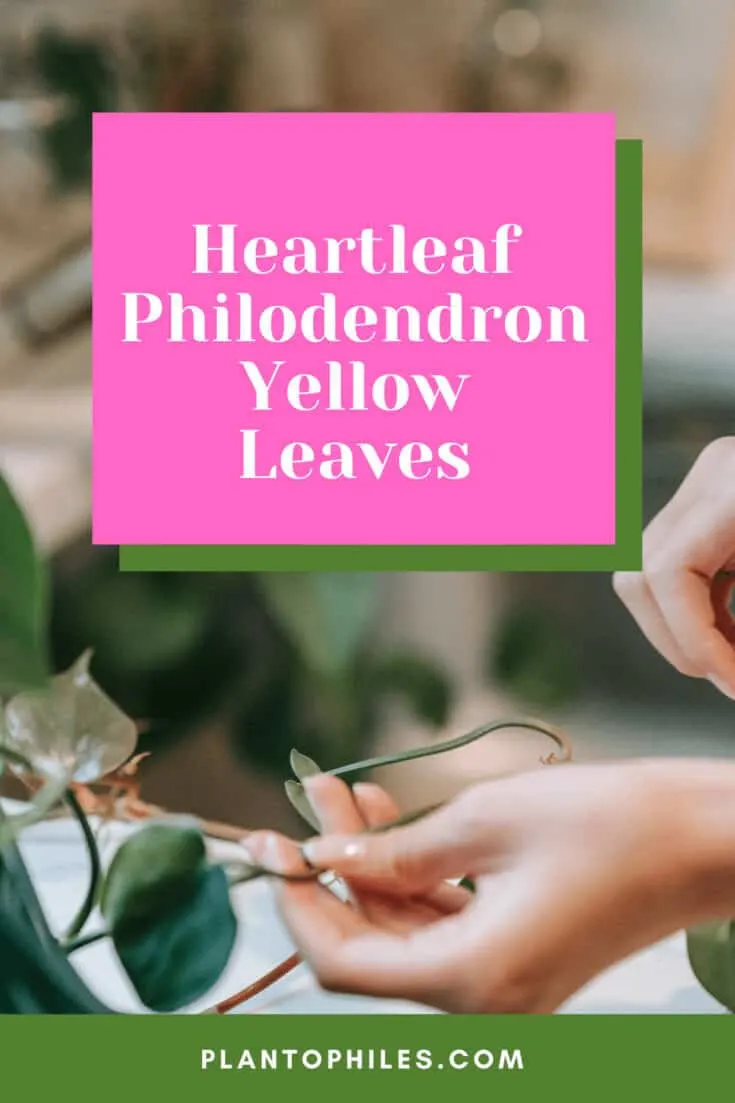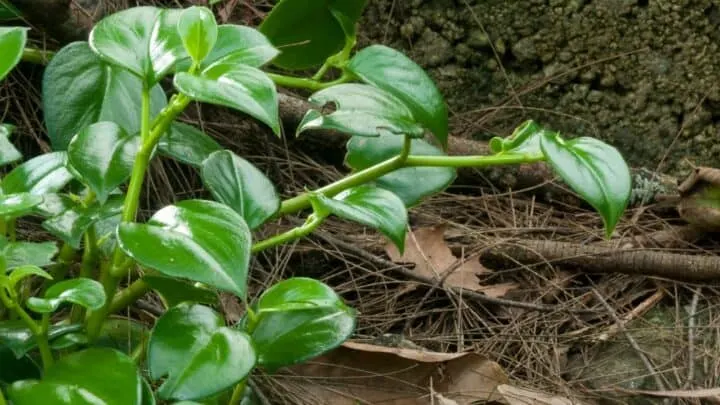One of the most beautiful plants you’ll find is the heartleaf philodendron. It’s a firm favorite for your indoor plant selection.
So when I got the chance to purchase my own heartleaf, I was eager and couldn’t wait to see this creep into my home like the plant from the Little Shop of Horrors, which is my favorite film of all time.
Yet, my dream became horror as my heartleaf philodendron suddenly began to wilt and make yellow leaves instead of the ripe green heart-shaped leaves we all love. Now what?
I did my homework and called up some green-fingered experts, and luckily I could save my heartleaf. I’d like to share what to do when your heartleaf philodendron yellow leaves make an untimely appearance.
Table of Contents
Heartleaf Philodendron Yellow Leaves
Yellow leaves in your heartleaf philodendron can occur because of too much or too little water, insufficient humidity, poor lighting, and a range of pests that damage the plant. By correcting what is wrong, you can save your plant, though sometimes a few yellow leaves are natural as old leaves have to die for new leaves to appear and grow.

Heartleaf Philodendron Yellow Leaves
When Your Heartleaf Philodendron Is Sick and What to Do
Yellow leaves instead of the lush green heart-shaped leaves on your philodendron are usually the first sign that the plant is sick or stressed.
There are several factors that can cause this, and knowing what to do in each case can really save your plant from dying.
And the heartleaf is so worth it; the philodendron is one of the best air purifying plants around, so having a few in your home is a great idea.
Incorrect Watering
When your philodendron has too much water, the roots will rot. Even though the heartleaf likes moisture and high humidity, you shouldn’t drown the plant.
I quickly discovered that my heartleaf prefers to have a dry top layer of about 25% of the pot’s depth.
A good way to test this is to stick your finger in and feel if the soil feels damp about a quarter of the pot depth down. If it does, then don’t water your heartleaf just yet.
Should you feel dry sand or soil all the way down to that depth, then you need to water your heartleaf immediately as being water-starved can lead to wilted and yellowing leaves.
Lack of Humidity
The philodendron is a tropical plant, meaning it prefers a higher level of humidity that combines with drier soil.
Should your heartleaf begin to wilt, and the soil dries out too often, you may want to use a hygrometer to test your humidity levels in your room.
I always go ahead and increase the humidity level in the room by switching off AC units and fans, and I may opt for a pebble tray. Alternatively, I increase the ambient humidity by growing more than one heartleaf plant together to increase transpiration.
Poor Lighting
My first philodendron was placed in a large pot on the small table behind the door in my bathroom. I thought this was a cute space and that the bit of green color would brighten up the dull room.
Sadly, it wasn’t long until the heartleaf suddenly began to wilt and yellow.
The light wasn’t strong enough here. Philodendron requires bright and semi-direct light to thrive. Anything less or a darkened room, and your heartleaf will not be happy.
My solution was to move the pot to a sunny room where the heartleaf received enough UV light and could grow happily.
However, a philodendron will take to a darker room if you provide some UVA and UVB light from appropriate lighting fixtures.
Just keep an eye that your plant doesn’t dry out when you place it in direct sunlight or if you leave the lights on for a lengthy period of time.
Pest Problems
Like most plants, a heartleaf doesn’t like to be bothered by pests like bugs, worms, or beetles. If your heartleaf has become the victim of insect strike or bacterial infections, you need to act quickly.
A stressed philodendron is likely to sicken, wilt, and die.
The main culprits are usually spider mites that suck at the sap, draining and dehydrating your heartleaf. Mealybugs and scale can also cause problems in indoor heartleafs as these insects also like semi-moist and humid conditions, just like the heartleaf.
When I see insects setting up their camp in my beloved philodendron, I act quickly. My go-to is to spray the plant with a low-toxicity insecticide, or I can also mix my own using neem oil, which will chase the bugs away but leave my heartleaf in good condition.
The first time I treated insect strike on my heartleaf, I mixed my neem oil with dishwashing liquid, believing this would make the mix easier to apply.
However, this is unwise as dishwashing liquid and other household chemicals can burn the leaves due to their pH and corrosive properties.
When Your Philodendron Is Not Sick, But Yellows
A heartleaf can begin dropping leaves and yellowing leaves when the plant has reached a ripe age. This can cause the plant to drop old and spent leaves.
However, this can create an ugly-looking plant that reminds me of an old-fashioned lady hitching up her skirts to display ugly twisted legs. This happens because the heartleaf will drop the oldest leaves at the bottom first.
When this happens, you can choose whether you want to throw away your plant, or you can use some corrective pruning to help right your heartleaf.
By pruning back the stem to a level close to the crown, your heartleaf will be able to regrow from a smaller shrub close to the ground.
Frequently Asked Questions about Heartleaf Philodendron Yellow Leaves
How to care for a heartleaf philodendron?
Ensure your heartleaf has medium to indirect sunlight, good semi-dry soil, and sufficient humidity and water to prevent the soil from drying out. If your heartleaf is planted in an area that is very dry, you can increase the humidity by using mulching or a pebble tray. Ensure the room temperature where your potted heartleaf remains above 60℉.
Why Is My Heartleaf Philodendron Turning Yellow?
When you don’t supply the correct watering schedule and appropriate humidity, your heartleaf will either drown or dehydrate from underwatering. Additionally, if there are pests that have settled on your heartleaf, these may steal your plant’s energy and lead to sickness.
The Final Heart
Philodendron or heartleaf plants are very popular, and for the most part, they aren’t all that tricky.
Just make sure you cover the basics of watering appropriately, keep the top 25% of the soil dry, and ensure sufficient light to help your plant grow.
I managed to save my heartleaf, and today it is an impressive plant that has formed a massive bush of vined glory. So take a closer look at your philodendron, find what may be making the leaves yellow, and remedy accordingly.

Daniel has been a plant enthusiast for over 20 years. He owns hundreds of houseplants and prepares for the chili growing seasons yearly with great anticipation. His favorite plants are plant species in the Araceae family, such as Monstera, Philodendron, and Anthurium. He also loves gardening and is growing hot peppers, tomatoes, and many more vegetables.


